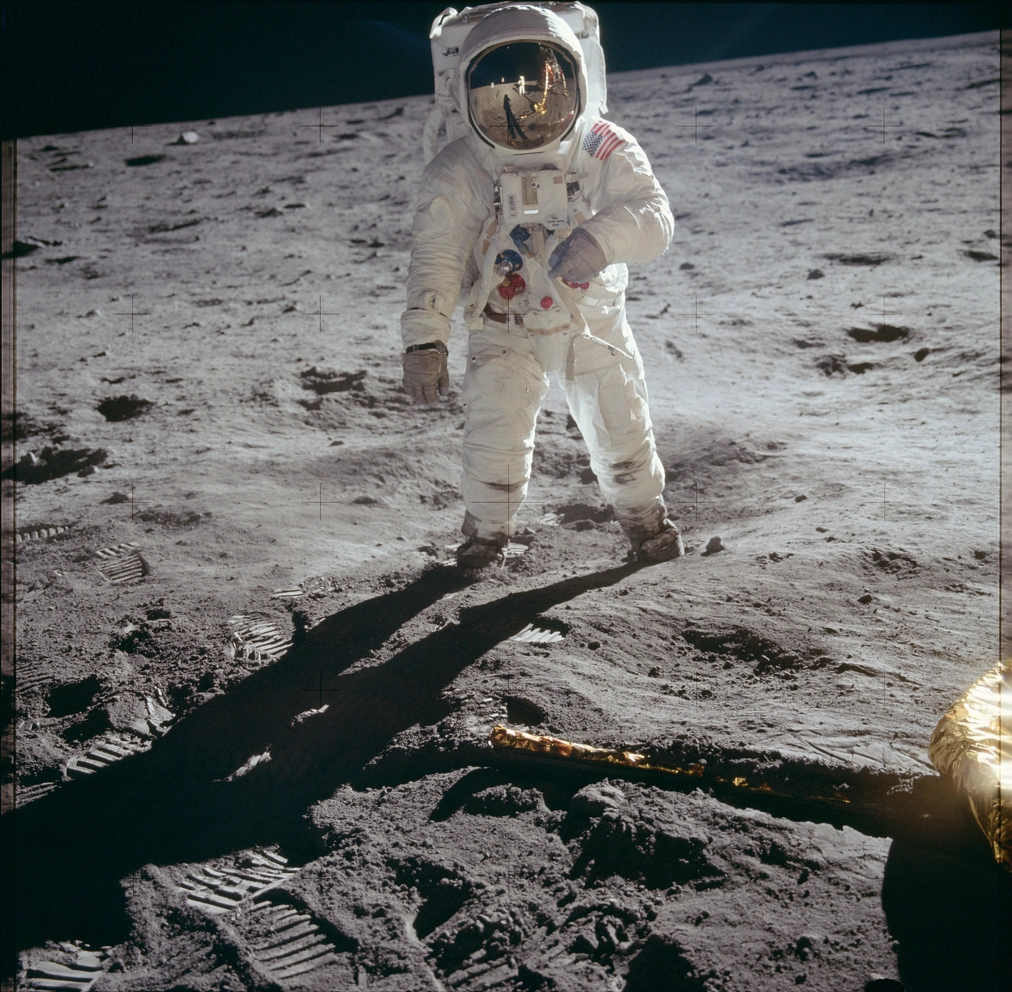NASA was established in 1958, and lunar (Moon) exploration soon became one of its primary focuses. A series of missions were conducted, initially to get spacecraft into space, then to orbit the Moon, and finally to land on the Moon. By 1972, NASA had successfully landed six manned missions on the Moon. Further missions were cancelled due to costs and changing priorities. Here’s for references purposes are those Apollo missions:
- Apollo 1: Tragic launch pad fire during a pre-launch test in 1967. All three astronauts died.
- Apollo 7: First successful crewed mission in 1968, tested the Command and Service Module in Earth’s orbit.
- Apollo 8: Circled the Moon in 1968, no landing. Important for lunar orbit experience.
- Apollo 9: Tested lunar module in Earth orbit in 1969, crucial for Moon landing.
- Apollo 10: Dressed rehearsal for Moon landing in 1969, but didn’t land.
- Apollo 11: Historic Moon landing in 1969, Neil Armstrong and Buzz Aldrin walked on the Moon.
- Apollo 12: Second Moon landing in 1969, collected more data and samples.
- Apollo 13: 1970 mission that faced near-disaster, no Moon landing due to technical issues.
- Apollo 14: Successful Moon landing in 1971, gathered more samples.
- Apollo 15: Conducted scientific experiments on the Moon’s surface in 1971.
- Apollo 16: Explored lunar highlands in 1972, gathered more samples.
- Apollo 17: Final Moon mission in 1972, explored Taurus-Littrow region, brought significant samples.
Apollo 1: Tragic Pre-Launch Fire The Apollo 1 mission, intended as a vital test of the Command and Service Module, took a tragic turn on January 27, 1967. During a pre-launch test on the launch pad, a cabin fire erupted, resulting in the deaths of all three astronauts aboard: Virgil “Gus” Grissom, Edward H. White II, and Roger B. Chaffee. This devastating incident led to a thorough reevaluation of safety protocols and spacecraft design to prevent future accidents.
Apollo 7: Successful Earth Orbit Test Apollo 7, launched on October 11, 1968, marked the triumphant return to space after the Apollo 1 tragedy. It was the first successful crewed mission in the Apollo program. Commanded by Wally Schirra, the mission achieved its goal of testing the Command and Service Module in Earth’s orbit. The crew conducted various experiments and maneuvers, demonstrating the spacecraft’s capabilities for future lunar missions. This successful mission paved the way for further advancements and laid the foundation for the Moon landings that would follow.
Apollo 8: Historic Lunar Orbit On December 21, 1968, Apollo 8 embarked on a historic journey, becoming the first crewed spacecraft to orbit the Moon. This mission, commanded by Frank Borman and carrying James Lovell and William Anders, provided valuable insights into lunar navigation and the challenges of space travel far from Earth. While Apollo 8 did not include a lunar landing, its circumlunar trajectory marked a pivotal step in human space exploration, building confidence for subsequent missions.
Apollo 9: Testing Lunar Module Compatibility Launched on March 3, 1969, Apollo 9 focused on testing the lunar module’s compatibility with the Command and Service Module in Earth’s orbit. Commanded by James McDivitt, the mission included vital activities like spacewalks, docking maneuvers, and tests of the lunar module’s propulsion systems. These trials were crucial for ensuring that the lunar module could safely carry astronauts to and from the lunar surface.
Apollo 10: Lunar Dress Rehearsal In May 1969, Apollo 10 undertook a pivotal mission known as the “dress rehearsal” for the upcoming Moon landing. Command module pilot John Young, lunar module pilot Eugene Cernan, and commander Thomas Stafford conducted a complete lunar orbit and tested all procedures, except the actual landing. This mission was instrumental in refining the techniques and procedures that would be crucial for Apollo 11’s historic landing.
Apollo 11: The First Moon Landing Arguably the most famous of all Apollo missions, Apollo 11 achieved humanity’s long-held dream of landing on the Moon on July 20, 1969. Commanded by Neil Armstrong, with Buzz Aldrin as the lunar module pilot and Michael Collins as the command module pilot, the mission successfully landed the lunar module “Eagle” on the Moon’s surface. Neil Armstrong’s iconic words, “That’s one small step for [a] man, one giant leap for mankind,” were spoken as he stepped onto the lunar surface, marking a monumental achievement in human history.
Apollo 12: Precision Moon Landing Apollo 12, launched on November 14, 1969, achieved a precise landing on the Moon’s surface near the Surveyor 3 spacecraft. Commanded by Charles “Pete” Conrad, with Alan L. Bean as the lunar module pilot and Richard F. Gordon as the command module pilot, the mission conducted scientific experiments and collected samples, further expanding our understanding of the Moon.
Apollo 13: Overcoming Near Disaster Launched on April 11, 1970, Apollo 13 faced a critical situation when an oxygen tank exploded, leading to the mission being aborted for a lunar landing. Commanded by James A. Lovell, with Fred W. Haise as the lunar module pilot and John L. Swigert as the command module pilot, the crew and mission control worked together to safely return the crew to Earth, showcasing remarkable problem-solving skills and teamwork.
Apollo 14: Successful Moon Exploration Apollo 14, launched on January 31, 1971, successfully landed on the Moon’s Fra Mauro highlands. Commanded by Alan B. Shepard, with Edgar D. Mitchell as the lunar module pilot and Stuart A. Roosa as the command module pilot, the mission conducted scientific experiments and collected significant lunar samples, contributing to our knowledge of lunar geology.
Apollo 15: Scientific Lunar Endeavors Launched on July 26, 1971, Apollo 15 focused on conducting scientific experiments and exploring the Moon’s Hadley-Apennine region. Commanded by David R. Scott, with James B. Irwin as the lunar module pilot and Alfred M. Worden as the command module pilot, the mission marked the first use of the Lunar Roving Vehicle for extended surface exploration, enhancing our understanding of lunar geology and geography.
Apollo 16: Exploring Lunar Highlands Apollo 16, launched on April 16, 1972, successfully landed in the lunar highlands of Descartes. Commanded by John W. Young, with Charles M. Duke as the lunar module pilot and Thomas K. Mattingly as the command module pilot, the mission conducted scientific experiments and collected valuable samples, contributing to our knowledge of the Moon’s history and geology.
Apollo 17: Final Lunar Mission The final mission of the Apollo program, Apollo 17, launched on December 7, 1972, and explored the Taurus-Littrow region on the Moon’s surface. Commanded by Eugene A. Cernan, with Harrison H. Schmitt as the lunar module pilot and Ronald E. Evans as the command module pilot, the mission included extensive geological studies and the use of the Lunar Roving Vehicle. The collected samples and data from Apollo 17’s mission continue to contribute to our understanding of the Moon’s evolution and history.





